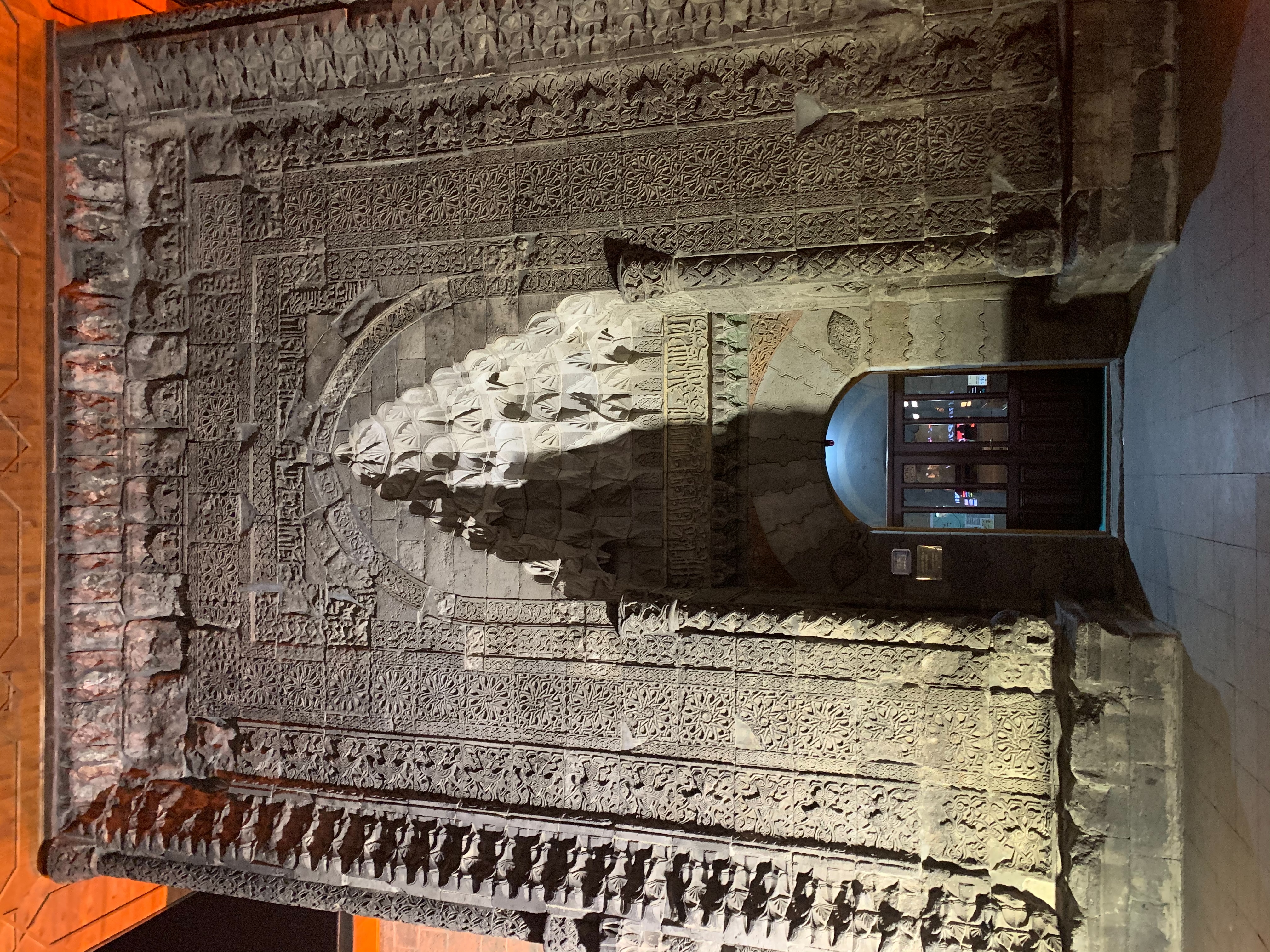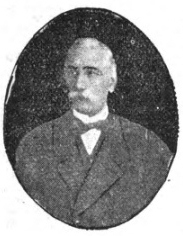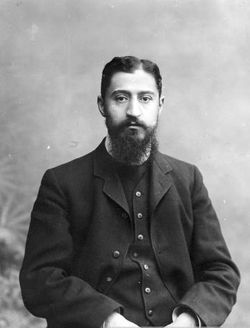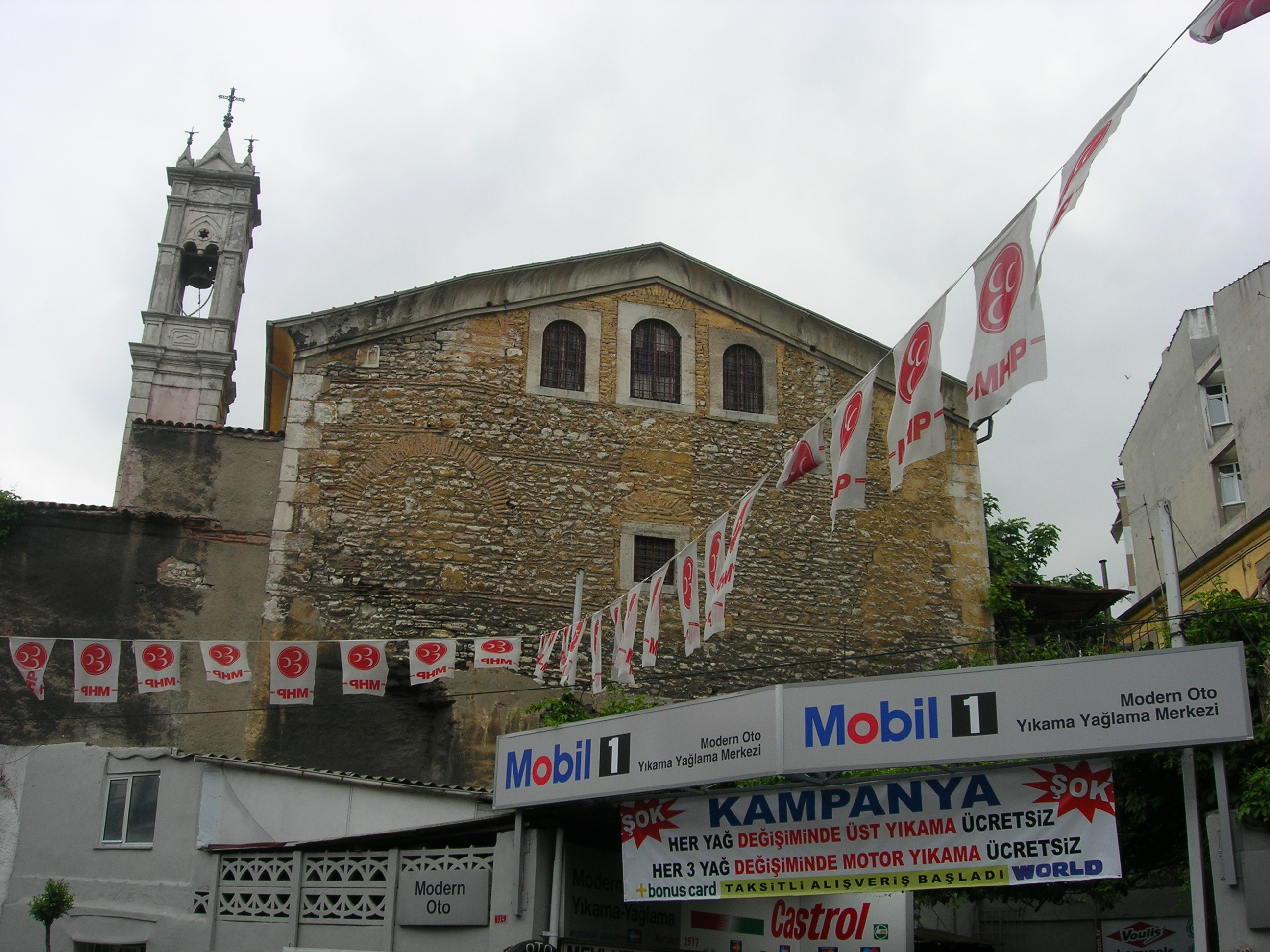|
Hrachia Adjarian
Hrachia Acharian (, Armenian orthography reform, reformed spelling: Հրաչյա Աճառյան; ; 8 March 1876 – 16 April 1953) was an Armenians, Armenian linguistics, linguist, lexicography, lexicographer, etymology, etymologist, and philology, philologist. An Armenians in Istanbul, Istanbul Armenian, Acharian studied at local Armenian schools and at the University of Paris, Sorbonne, under Antoine Meillet, and the University of Strasbourg, under Heinrich Hübschmann. He then taught in various Armenian communities in the Russian Empire and Iran before settling in the Armenian Soviet Socialist Republic in 1923, working at Yerevan State University until his death. A polyglot, Acharian compiled several major dictionaries, including the monumental ''Armenian Etymological Dictionary'', extensively studied Armenian dialects, compiled catalogs of Armenian manuscripts, and authored comprehensive studies on the history of Armenian language and Armenian alphabet, alphabet. Acharian i ... [...More Info...] [...Related Items...] OR: [Wikipedia] [Google] [Baidu] |
Istanbul
Istanbul is the List of largest cities and towns in Turkey, largest city in Turkey, constituting the country's economic, cultural, and historical heart. With Demographics of Istanbul, a population over , it is home to 18% of the Demographics of Turkey, population of Turkey. Istanbul is among the List of European cities by population within city limits, largest cities in Europe and List of cities proper by population, in the world by population. It is a city on two continents; about two-thirds of its population live in Europe and the rest in Asia. Istanbul straddles the Bosphorus—one of the world's busiest waterways—in northwestern Turkey, between the Sea of Marmara and the Black Sea. Its area of is coterminous with Istanbul Province. Istanbul's climate is Mediterranean climate, Mediterranean. The city now known as Istanbul developed to become one of the most significant cities in history. Byzantium was founded on the Sarayburnu promontory by Greek colonisation, Greek col ... [...More Info...] [...Related Items...] OR: [Wikipedia] [Google] [Baidu] |
Heinrich Hübschmann
Johann Heinrich Hübschmann (1 July 1848 – 20 January 1908) was a German philologist. Life Hübschmann was born on 1 July 1848 at Erfurt. He studied Oriental philology at Jena, Tübingen, Leipzig, and Munich; in 1876 he became professor of Iranian languages at Leipzig, and in 1877 professor of comparative philology at Strasbourg. Hübschmann died on 20 January 1908 in Freiburg im Breisgau. Research on the Armenian language Hübschmann was the first to show in 1875 that the Armenian language was not a branch of the Iranian languages (earlier assumed so because of the immense amount of Iranian influence on Armenian throughout its history) but an entirely separate Indo-European branch in its own right. He used the comparative method In linguistics, the comparative method is a technique for studying the development of languages by performing a feature-by-feature comparison of two or more languages with common descent from a shared ancestor and then extrapolating backwards .. ... [...More Info...] [...Related Items...] OR: [Wikipedia] [Google] [Baidu] |
Société De Linguistique De Paris
The Société de Linguistique de Paris (established 1864) is the editing body of the ''BSL'' (''Bulletin de la Société de Linguistique'') journal. Members of the society have included such well-known French linguists as Bréal, Saussure, Meillet, and Benveniste. Its first president was Antoine d'Abbadie. In addition to its monthly meetings, the group holds a one-day conference each January dedicated to a particular topic. In 1997, it organised the '' Congrès International des Linguistes'' in Paris. References External links *http://www.slp-paris.com/ Linguistic societies Organizations based in Paris {{ling-org-stub ... [...More Info...] [...Related Items...] OR: [Wikipedia] [Google] [Baidu] |
Erzurum
Erzurum (; ) is a List of cities in Turkey, city in eastern Anatolia, Turkey. It is the largest city and capital of Erzurum Province and is 1,900 meters (6,233 feet) above sea level. Erzurum had a population of 367,250 in 2010. It is the site of ancient Theodosiopolis. The city uses the double-headed eagle as its coat-of-arms, a motif that has been a common symbol throughout Anatolia since the Bronze Age. Erzurum has winter sports facilities, hosted the 2011 Winter Universiade, and the 2023 Winter Deaflympics (in March 2024). Name and etymology The city was originally known in Armenian language, Armenian as Karno K'aghak' (), meaning city of Karin, to distinguish it from the district of Karin (wikt:Կարին, Կարին). It is presumed its name was derived from a local tribe called the Karenitis. Darbinian, M. "Erzurum," Armenian Soviet Encyclopedia. Yerevan: Armenian Academy of Sciences, 1978, vol. 4, p. 93. An alternate theory contends that a local princely family, the Kams ... [...More Info...] [...Related Items...] OR: [Wikipedia] [Google] [Baidu] |
Sanasarian College
The Sanasarian College (, ) was an Armenian language, Armenian-language educational institution in the city of Erzurum (called Erzurum, Karin by Armenians), Ottoman Empire founded in 1881 by an Armenian merchant, Mkrtich Sanasarian. Its students were children of primary and secondary school age. It also had a pedagogical department for the training of Armenian teachers and a trade school. Description It was a school of high grade which consisted of teachers who were mostly educated in Germany. The college had a nine-year course, with a high grade education that was taught. The school lasted until the Armenian genocide, when most of the teachers were killed and the building was ruined. Sanasarian college was a foremost institution for Culture of Armenia, Armenian culture and education in the eastern provinces during the decades before World War I. England, English explorer, writer, and natural historian Isabella Bird (1831–1904) described the college as follows: After the Arm ... [...More Info...] [...Related Items...] OR: [Wikipedia] [Google] [Baidu] |
Kadıköy
Kadıköy () is a municipality and Districts of Turkey, district on the Asian side of Istanbul Province, Istanbul Province, Turkey. Its area is 25 km2, and its population is 467,919 (2023). It is a large and populous area in the Asian side of Istanbul, on the northern shore of the Sea of Marmara. It partially faces the historic city centre of Fatih on the European side of the Bosporus. It is bordered by the districts of Üsküdar, to the northwest, Ataşehir, to the northeast, and Maltepe, Istanbul, Maltepe, to the southeast. Kadıköy was known in classical antiquity and during the Roman Empire, Roman and Byzantine Empire, Byzantine eras as Chalcedon (). Chalcedon was known as the 'city of the blind'. The settlement has been under control of many empires, finally being taken by the Ottomans before the fall of Constantinople. At first, Chalcedon was Rural area, rural, but with time it Urbanization, urbanized. Kadıköy separated from the Üsküdar district in 1928. One o ... [...More Info...] [...Related Items...] OR: [Wikipedia] [Google] [Baidu] |
Yerevan University
Yerevan State University (YSU; , , ), also simply University of Yerevan, is the oldest continuously operating public university in Armenia. Founded in 1919, it is the largest university in the country. It is thus informally known as Armenia's "mother university" (, ). Of its 3,150 employees, 1,190 comprise the teaching staff, which includes 25 academicians, 130 professors, 700 docents (associate professors), and 360 assistant lecturers. The university has 400 researchers, 1,350 post-graduate students, and 8,500 undergraduates, including 300 students from abroad. Instruction is in Armenian language, Armenian, but instruction in Russian language, Russian or English language, English for foreign students is available as needed. The academic year is from September 1 through June 30. According to University Ranking by Academic Performance (URAP), it was the top-ranked university in Armenia and the 954th in the world in 2010, of 20,000 institutions included in the list. Yerevan Sta ... [...More Info...] [...Related Items...] OR: [Wikipedia] [Google] [Baidu] |
Getronagan Armenian High School
Getronagan is an Armenian minority high school in the Karaköy district of Istanbul, Turkey, The school is attached to the Saint Gregory the Illuminator Church. Establishment With the sponsorship of Archbishop Nerses Varjabetyan, Getronagan High School opened its doors on September 1, 1886. The Catholicos of All Armenians (the religious leader of all Armenians), Magar, and Harutyun Archbishop Vehabetyan, the Patriarch of Armenians in İstanbul, conducted the opening commencement. Minas Cheraz became its first principal. Today Getronagan teaches both genders. In 2001, the school had 182 students. The school teaches mainly in Turkish, but it also has Armenian language and literature and religion classes. English (compulsory), French and Spanish (both optional) are taught as foreign languages. Notable alumni * Hrachia Adjarian - linguist * Vazken Andréassian - engineer * Şahan Arzruni - pianist * Hayko Cepkin - singer * Onnik Chifte-Saraf - writer * Arshag Choba ... [...More Info...] [...Related Items...] OR: [Wikipedia] [Google] [Baidu] |
Samatya
Samatya (; ) is a quarter of the Fatih district of Istanbul. It is located along the Marmara Sea, and borders to the west on the neighborhood of Yedikule (the "Castle of the Seven Towers"). Etymology The name originates from the Greek word ''psamathion'' (), meaning "sandy", because of the great quantity of sand found in the quarter. History About 383 AD, the first monastic institution was established in Constantinople, at Psamatheia, at that time still outside the walled city. Up to recent times, Samatya was mostly inhabited by Armenians, who were settled here in 1458 by Sultan Mehmet II,Müller-Wiener (1977), p. 200 and who own there the church of '' Surp Kevork'', also called ''Sulu Manastiri'' (Water's monastery) – previously an Eastern Orthodox church which dates back to before the Ottoman conquest, and by Greeks, who have the churches of ''Hristos Analipsis'' and '' Haghios Menas''.Müller-Wiener (1977), p. 186 The quarter was destroyed in 1782 by one of the larges ... [...More Info...] [...Related Items...] OR: [Wikipedia] [Google] [Baidu] |
Shoemaking
Shoemaking is the process of making footwear. Originally, shoes were made one at a time by hand, often by groups of shoemakers, or '' cordwainers'' (sometimes misidentified as cobblers, who repair shoes rather than make them). In the 18th century, dozens or even hundreds of masters, journeymen, and apprentices (both men and women) would work together in a shop, dividing the work into individual tasks. A customer could come into a shop, be individually measured, and return to pick up their new shoes in as little as a day. Everyone needed shoes, and the median price for a pair was about one day’s wages for an average journeyman. The shoemaking trade flourished in the eighteenth and early nineteenth centuries but began to be affected by industrialization in the later nineteenth century. Traditional handicraft shoemaking has now been largely superseded in volume of shoes produced by industrial mass production of footwear, but not necessarily in quality, attention to detail, or ... [...More Info...] [...Related Items...] OR: [Wikipedia] [Google] [Baidu] |
Armenian Alphabet
The Armenian alphabet (, or , ) or, more broadly, the Armenian script, is an alphabetic writing system developed for Armenian and occasionally used to write other languages. It is one of the three historical alphabets of the South Caucasus. It was developed around 405 AD by Mesrop Mashtots, an Armenian linguist and ecclesiastical leader. The script originally had 36 letters. Eventually, two more were adopted in the 13th century. In reformed Armenian orthography (1920s), the ligature is also treated as a letter, bringing the total number of letters to 39. The Armenian word for 'alphabet' is ('), named after the first two letters of the Armenian alphabet: ' and '. Armenian is written horizontally, left to right. History and development Possible antecedents One of the classical accounts of the existence of an Armenian alphabet before Mesrop Mashtots comes from Philo of Alexandria (20 BCAD 50), who in his writings notes that the work of the Greek philosoph ... [...More Info...] [...Related Items...] OR: [Wikipedia] [Google] [Baidu] |
Armenian Language
Armenian (endonym: , , ) is an Indo-European languages, Indo-European language and the sole member of the independent branch of the Armenian language family. It is the native language of the Armenians, Armenian people and the official language of Armenia. Historically spoken in the Armenian highlands, today Armenian is also widely spoken throughout the Armenian diaspora. Armenian is written in its own writing system, the Armenian alphabet, introduced in 405 AD by Saint Mesrop Mashtots. The estimated number of Armenian speakers worldwide is between five and seven million. History Classification and origins Armenian is an independent branch of the Indo-European languages. It is of interest to linguists for its distinctive phonological changes within that family. Armenian exhibits Centum and satem languages, more satemization than centumization, although it is not classified as belonging to either of these subgroups. Some linguists tentatively conclude that Armenian, Greek ... [...More Info...] [...Related Items...] OR: [Wikipedia] [Google] [Baidu] |








